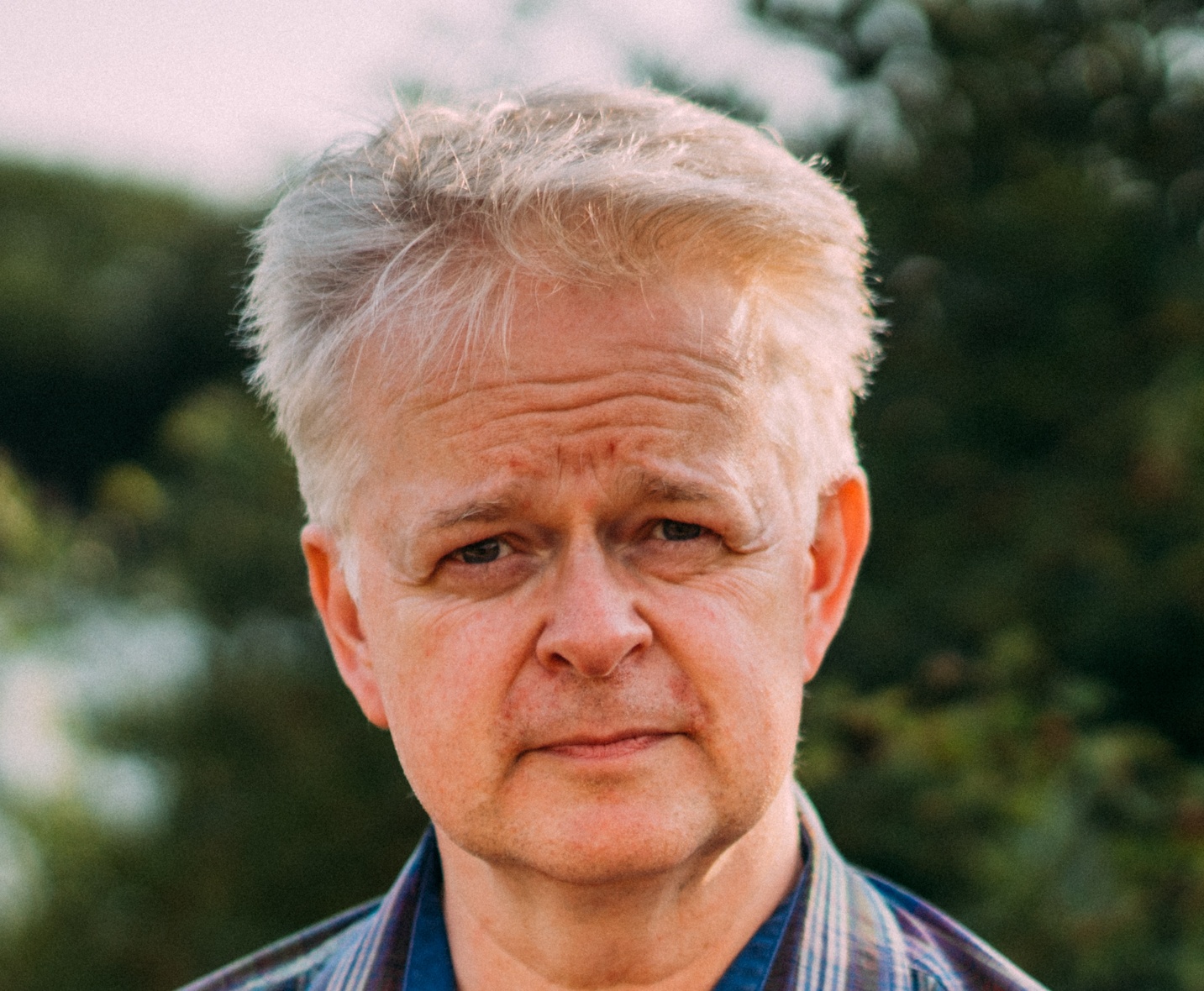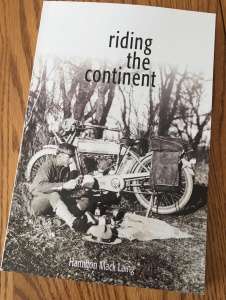
Laing has provided us with as much a detailed description of the lands travelled through, the people he happened to encounter and, most especially, of the flora and fauna seen, as he does about actually riding his motorcycle…This book should give pleasure to more than just devotees of the motorcycle travelogue sub-genre and appeal to a far wider readership.
-Steve Koerner (author of The Strange Death of the British Motorcycle Industry) for The Ormsby Review
More than a century (after Laing’s 1915 journey), motorcycle essayist Trevor Hughes, author of two motorcycle travelogues, has retrieved and edited Laing’s unpublished memoir as Riding the Continent.
-Alan Twigg, BC Bookworld
Laing’s cross-country motorcycle journey in 1915 on Barking Betsy was a unique and exciting accomplishment in its day, and his remarkable journal from the ride is a fascinating read.
-Mark Tuttle, Editor-in-Chief Rider Magazine
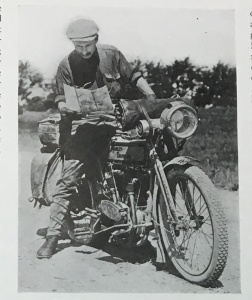
Riding the Continent (ISBN 978-1-55380-556-4)
Hamilton Mack Laing was an illustrious early British Columbian writer and naturalist, but few know him as how he described himself in his mid-thirties: a motorcycle-naturalist. In 1915, he made one of the first transcontinental journeys, riding across the United States from Brooklyn to Oakland. His previously unpublished manuscript of this journey, hidden away for nearly a century, is available now for the first time. Riding the Continent tells the story of a pioneering motorcyclist and independently thinking naturalist on a most unusual road trip. Laing’s tale explores the beauty of North America’s bird life, describes the sights, scenery and people he encountered, and takes us along for the ride on a 1915 Harley-Davidson he named Barking Betsy. Also included are a foreword by Laing biographer and B.C. historian Richard Mackie and an afterword by editor and motorcycle travel writer Trevor Marc Hughes, along with dozens of photos.
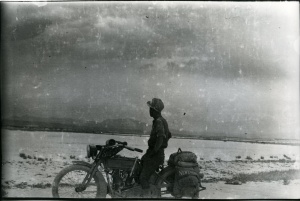
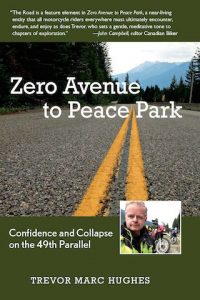
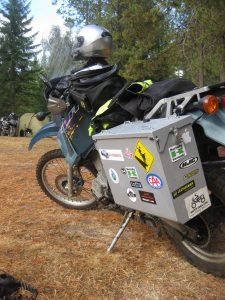
With Zero Avenue to Peace Park Trevor steers a course into a past filled with cowboys, prospectors, railway men, lawmen and bad men. It’s a meditation on the colours and flavours of the Old Canadian West and a discourse on Canada’s not always easy relationship with her closest neighbour. As passengers on the pilion, we’re taken to towns that once boomed but have now nearly vanished from view, leaving behind only the names of the scoundrels and dreamers who built them. The Road is a feature element in Zero Avenue to Peace Park, a near-living entity that all motorcycle riders everywhere must ultimately encounter, endure, and enjoy as does Trevor, who sets a gentle, meditative tone to chapters of exploration. His writing is framed by the iron of tireless research and underscored by the musical notes of a relentless motorcycle as Zero Avenue to Peace Park, the Journey of an Everyman, brings new life to the dusty streets and forgotten people of long ago.
-John Campbell, editor Canadian Biker
Like his first book, Zero Avenue to Peace Park is as honest an account as you could hope to read. The author puts aside ego and image, giving us an uncut, dropped-my-bike-before-I-even-started account. Combine that with a total lack of pretentiousness and an unpadded outlook, and Trevor has the perfect formula for many more voyages and subsequent stories to share with all of us.
-Marcus Martellacci, Motorcycle Mojo
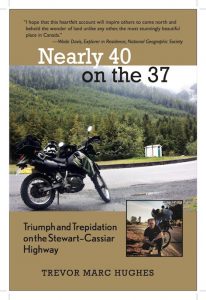
Praise for “Nearly 40 on the 37: triumph and trepidation on the Stewart-Cassiar Highway”…
I hope that this heartfelt account will inspire others to come north and behold the wonder of land unlike any other, the most stunningly beautiful place in Canada.
–Wade Davis, Explorer in Residence, National Geographic Society
…readers will find a sense of familiarity in these pages, and a welcome dose of honesty…a fun, quick read.
-Marcus Martellacci, Motorcycle Mojo
Very few backcountry riders ever admit to fear and anxiety. Trevor’s admission lends a whole new level of credibility to his writing.
–John Campbell, Canadian Biker Magazine
Hughes has a gift for writing; he’s personable, relatable, honest and well-spoken, and writes in an endearing, welcoming and inoffensive manner that makes it easy to keep flipping the pages.
-Graeme Jones, Inside Motorcycles
Written with honesty and humour, it is a story that even non-motorcyclists will find engaging.
– Kirsten Armleder, RidersWest Magazine
…it is his trepidation that gives his account a sense of honesty that is often missing from travel stories.
–Terry Peters, The North Shore News
…a well-written and interesting read…It’s a book that you’ll want to pick up and finish.
–Dan McAfee, Canadianmotorcyclerider.ca

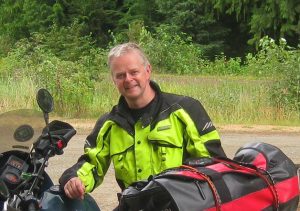
Zero Avenue to Peace Park (ISBN 978-0-9918590-3-0)
Two years after the Stewart-Cassiar adventure, I came up with an idea while riding along a remarkably straight ribbon of road that travels along the 49th Parallel, thirty kilometres east from its starting point in White Rock, British Columbia and mere feet from the border with the United States of America. What would I discover for myself if I rode my Kawasaki KLR650 close to the border, continuing east? Would I learn more about why that border is where it is in the first place and how it shaped the province I call home? Would I learn more about how Canada and the United States have learned to live as neighbours?
Serendipity had me riding with a friend from Colorado that I had met while traveling north along the Stewart-Cassiar Highway, Wes Taylor, and we would also talk about our nations and our experiences growing up with our own nationalities. As we adventured on our KLR650s through the ghost towns and small communities of the Kootenay region of British Columbia and further, we would together discover more about the province of B.C., about our countries and ourselves and our need for adventure.

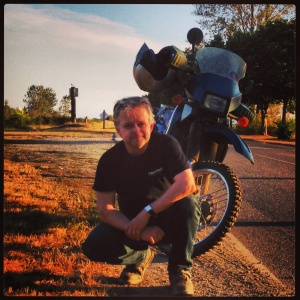
Nearly 40 on the 37 (ISBN 978-0-9918590-0-9)
In August 2012, I rode north into, what was for me, the unknown.
The Stewart-Cassiar Highway became a motorcycle journey I would never forget into a part of British Columbia seldom written about and along a road often blasted through to get somewhere else. I found Highway 37 to be fascinating in its own right, wrote an article for Canadian Biker about my exploration of the communities, places and people I found along the way and found there to be so much more to describe.
So I wrote a book.
During the writing of the article and book I kept in touch with one of my heroes, anthropologist Wade Davis. We had an email correspondence in which he agreed to read my book. He then wrote a wonderful statement about the book itself, part of which I’m proud to have included on the front cover. That part of northern British Columbia is truly a “wonder of land unlike any other, the most stunningly beautiful place in Canada.”
